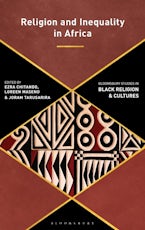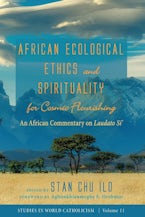- Home
- history
- social science
- In the Shadow of Moses

In the Shadow of Moses
New Jewish Movements in Africa and the Diaspora
Edited by: Daniel Lis, William F. S. Miles and Tudor Parfitt
280 Pages
- Paperback
- ISBN: 9781599071466
- Published By: Tshei Publishers
- Published: December 2016
$29.95
With this volume, editors Daniel Lis, Williams F. S. Miles, and Tudor Parfitt aim “to put on the radar of students and specialists of Africa the existence and growth of Jewish communities of color,” as well as to deal with a developing religious and ethnic question for the twenty-first century: “What is the role of Black Africans, both in Africa and the African Diaspora, in the redefinition of Judaism and Jewish identity?” (xii).
In the opening chapter, “African Judaism and New Religious Movements: Repainting the ‘White House’ of Judaism,” Miles frames contemporary African and Black communities practicing Judaism as New Jewish Movements (NJMs), and situates what he terms the “extraordinary flourishing of African and African Diaspora Judaism” within the established literature of New Religious Movements (3). By focusing on populations in Nigeria (specifically the Igbo) and Madagascar that claim Israelite ancestry through Lost Tribe descent, Miles illustrates how NJMs often involve a transition from mainstream Christian denominations (including Sabbatarian churches, which observe Saturday as the day of rest); to “Messianic Judaism” (a Jesus-centric faith involving the adoption of Jewish rituals, observances, and holidays, but which global Jews would recognize as Christianity); and finally to normative Judaism.
Parfitt’s chapter on “Race and History: The Black Jews of Loango” deals with a group for which there is a “meager amount of information available” (40), evidence is “sparse” (44), and that has “a largely unknowable past” (45), but that resided between 1500 and 1915 in what today is the western part of the Republic of Congo. (So much for a new Jewish movement.) Parfitt discusses this vanished community in the context of “the anxieties and concerns which the concept of ‘Black Jew’ in general provoked in Western society” (45), and the trouble Westerners have had in conceptualizing the existence of Black Jews.
In “They were Looking for Christians and What They Got Were Jews,” Lis describes the Christian concept of Lost Tribes and how nineteenth-century Christian missionaries—in particular those from Basel—nourished Jewish identity construction in Ethiopia, Ghana, and Nigeria, and to some extent in Sierra Leone, where they also operated. While African “adherents of Judaism (the religion)—or Judaizers—represent a tiny fraction of their respective ethnic groups, the overall identification of an Israelite origin is often shared with larger sections of the ethnic (and mostly Christian) groups to which they belong” (51). Lis argues that this is at least partly the result of Christian missionary influence. For example, “with the introduction of literacy and the Bible to the Igbo, Christian conversion efforts led many Igbo to recognize themselves and their customs in the stories of the Old Testament and the religion of ancient Israel” (59), and to identify as Jews even without embracing Judaism. Meanwhile, Israelite identity was clearly in existence among the Beta Israel in Abyssinia prior to nineteenth-century missionizing there—though opposition to the missionaries may have led to “a revival of Beta Israel identity” (67)—and Lis is cautious about disparaging “the authenticity of Black African Jewish identity” (69).
In “The Color of Judaism,” the only chapter situated in Europe, Aurélien Mokoko Gampiot and Cécile Coquet-Mokoko describe, based on six years of fieldwork, the challenges currently facing Black Jews in France, where there are an estimated 550,000 to 600,000 Jews. While the total number of practicing Black Jews is not known, an estimated two hundred families of African and West Indian descent who practice Judaism reside in the greater Paris area. Numerically marginal, Black Jewish men and women are active in attempting to normalize “their presence in Jewish spaces in France by becoming visible” to other Jews, as “their identification with the Jewish people is inseparable from the issue of visibility” (85).
Also concerned with visibility, Janice R. Levi’s “Making Visible the Invisible,” the volume’s fifth chapter, focuses on the “House of Israel” community of Ghana’s Sefwi Wiawso district. Though its claim to Judaism was first made in 1977, following its founder’s theopneusty, Levi contends that the community and its wider ethnic group may indeed be, as the House of Israel asserts, descendants of Jews. Prior to 1977, a legacy of imposed Jewish invisibility had been inculcated in the Sefwi, she argues, due to “persecution, colonialism, or the inability to freely choose a religion” (107). Levi points to the community’s “oral narratives, performative memory (i.e., institutionalized memory), and external commentaries” as sources that should be privileged no less than “Western paradigms and preferences of historical documentation” when it comes to authenticating Jewish origin (109).
Nathan P. Devir’s “The ‘Internet Jews’ of Cameroon: Inside the Digital Matrix of Globalized Judaism” describes the Beth Yeshourun community in the village of Saa, whose then-Christian members began learning about Judaism through the Internet in the late 1990s and who for the most part do not posit a Jewish genealogy for themselves. Alone among this volume’s contributors, Devir intimates some doubt about the flourishing of NJMs, remaining uncertain about this approximately fifty-person community’s future. Though the Internet has proved useful for learning about rabbinic Judaism and making connections with global Jewry, its members have no real Jewish infrastructure. Furthermore, given that most of them do not claim a shared genealogy with other Jews, casual Jewish “ethnocultural belonging is not an option” for the Beth Yeshourun in Cameroon (127).
Isabella Soi’s “Judaism in Uganda: A Tale of Two Communities” discusses one NJM’s rise, difficulties, and more recent renaissance. She recounts the Baganda leader Semei Kakungulu’s religious shift from Christianity toward biblical Judaism, and eventually rabbinic Judaism, in the late 1910s and 1920s, as well as the subsequent travails that the relatively isolated community he founded experienced under the dictatorship of Idi Amin, whose persecutions reduced the community to some three hundred members. Though the now-revitalized Abayudaya still have limited contact with Jews residing in the capital (who are mainly foreign businessmen and diplomats) and have not been recognized as Jewish by the state of Israel, they have many international Jewish links, which have aided them in developing religious, educational, and economic infrastructure.
In the volume’s eighth chapter, “A Matrix of Jewish Phenomena in Sub-Saharan Africa,” Marla Brettschneider discusses recent “Jewish or Jewishly related” developments in Côte d’Ivoire and Gabon, paying particular attention to gender issues. NJM growth there has occurred within the colonial and slavery legacy of the communities in these countries, with Judaism or ideas related to it (such as forms of Kabbalah) satisfying “individual and communal aspirations for meaning and self-identification” (169).
In chapter 10, “Building Bridges: Ethiopian Israelis Take a Second Look at Ethiopia,” Len Lyons investigates “where Ethiopian Israelis themselves, both past and present, believe their home to be” (201). Even in Ethiopia, the Beta Israel community saw distant Jerusalem as its home. However, though the state of Israel has quite possibly “done more to support the Ethiopian community than any country has ever done for an immigrant group,” Ethiopian Jews, many of whom have now adopted a Black racial identity along with their Jewish one, have come “to the conclusion that they are second-class citizens” in Israel (212). Lyons argues that their integration will take a long time. Nonetheless, though they may not yet “feel at home” in Israel, Ethiopian Israelis, who now number about 140,000, “profess strongly the idea that Israel is their home” (218).
Chapter 9, Sheldon Gellar’s “‘Ye Shall Not Oppress the Stranger’: Sudanese and Eritrean Asylum Seekers in Israel,” and chapter 11, Martina Konighofer’s “Who Opened the Seven Seals?: Rastafarians and African Hebrew Israelites of Jerusalem” are perhaps the most puzzling in this volume on NJMs. These are certainly African diaspora movements, but it is difficult to see how they are new Jewish movements, and the authors do not attempt to make that case. There is no indication that asylum seekers, Rastafarians, or African Hebrew Israelites of Jerusalem demonstrate any of the signs of the NJMs pattern in which non-Jewish faiths such as Christianity or “Messianic Judaism” lead to rabbinic Judaism or an affiliation with global Jewry.
Emphasizing the “extraordinary flourishing of African and African Diaspora Judaism,” In the Shadow of Moses’s preface is preceded by a map of Africa and Southwest Asia showing “Countries with Jewish and Judaizing communities covered in this book” (x). These are Senegal, Sierra Leone, Republic of Congo, Angola, Sudan, South Sudan, Eritrea, Cote d’Ivoire, Ghana, Cameroon, Gabon, Uganda, Nigeria, Madagascar, Ethiopia, and Israel. (France, though the focus of a chapter, is absent from the map.) As the book progresses, however, it is less apparent that several of the African and African diaspora communities covered in this volume can be accurately described as new, flourishing, or Jewish. Indeed, by the conclusion of this otherwise informative collection, it is evident that the new Jewish and Judaizing communities of at least seven of the countries (Senegal, Sierra Leone, Republic of Congo, Angola, Sudan, South Sudan, and Eritrea) listed on its map of Africa have not been discussed at all.
Shai Afsai is an Independent Scholar.
Shai AfsaiDate Of Review:March 13, 2018
Daniel Lis is a Swiss-Israeli social anthropologist and historian of Judaic studies. He is a recent research fellow at the Centre for Jewish Studies, University of Basel and the Abraham Centre for International and Regional Relations at Tel Aviv University. He is the author of Jewish Identity among the Igbo of Nigeria.
William Miles is Professor of Political Science and the former Stotsky Professor of Jewish Historical and Cultural Studies at Northeastern University in Boston. He is the author of Jews of Nigeria: An Afro-Judaic Odyssey; Afro-Jewish Encounters from Timbuktu to the Indian Ocean and Beyond; and Zion in the Desert.
Tudor Parfitt is Distinguished Professor in the Steven J. Green School of International and Public Affairs at Florida International University. He has presented seven documentaries and authored or edited 26 books of which the most recent is Memory and Ethnicity: Ethnic Museums in Israel and the Diaspora (edited with D. Miccolli and E. Trevisan-Semi.)











